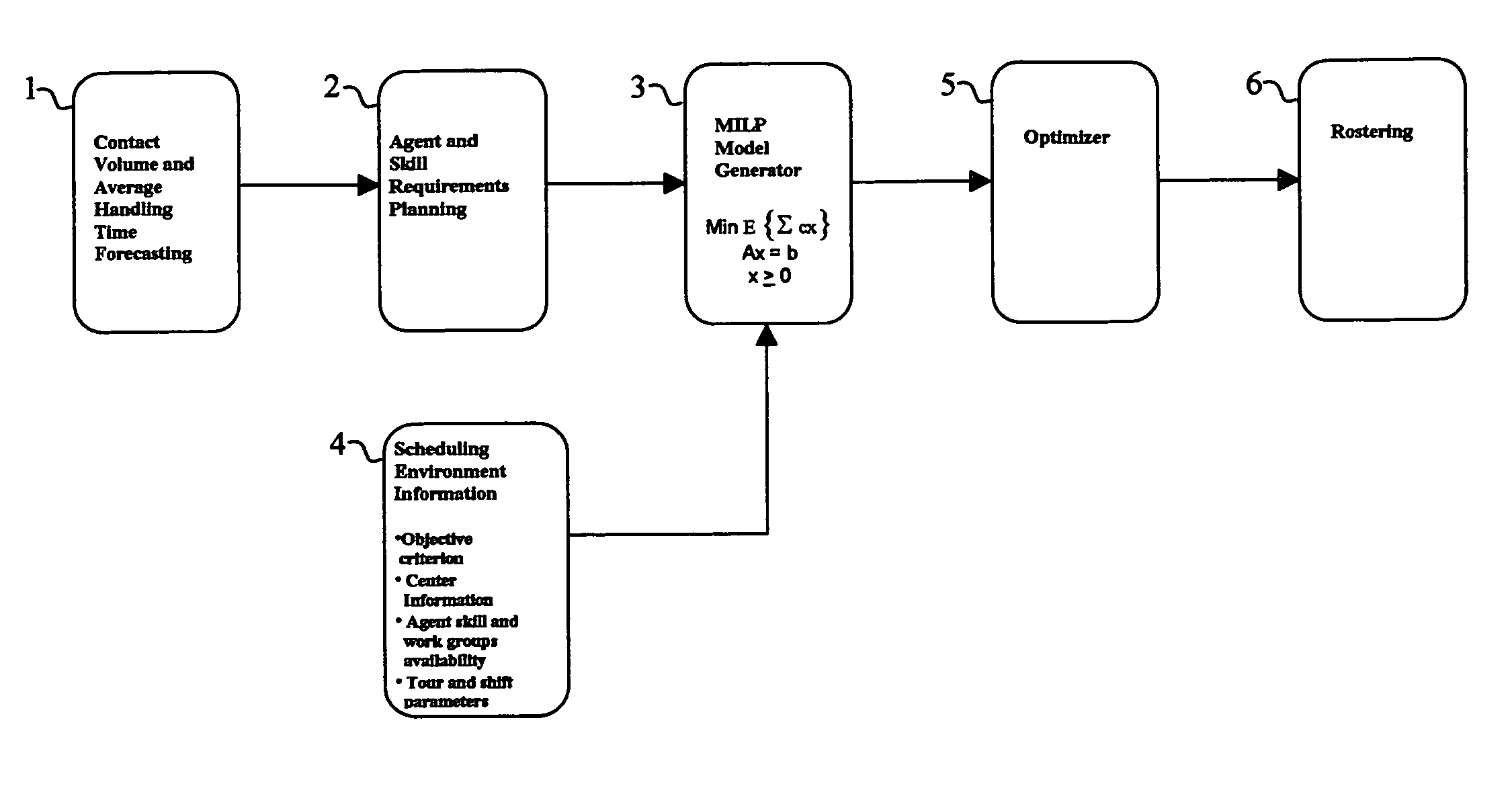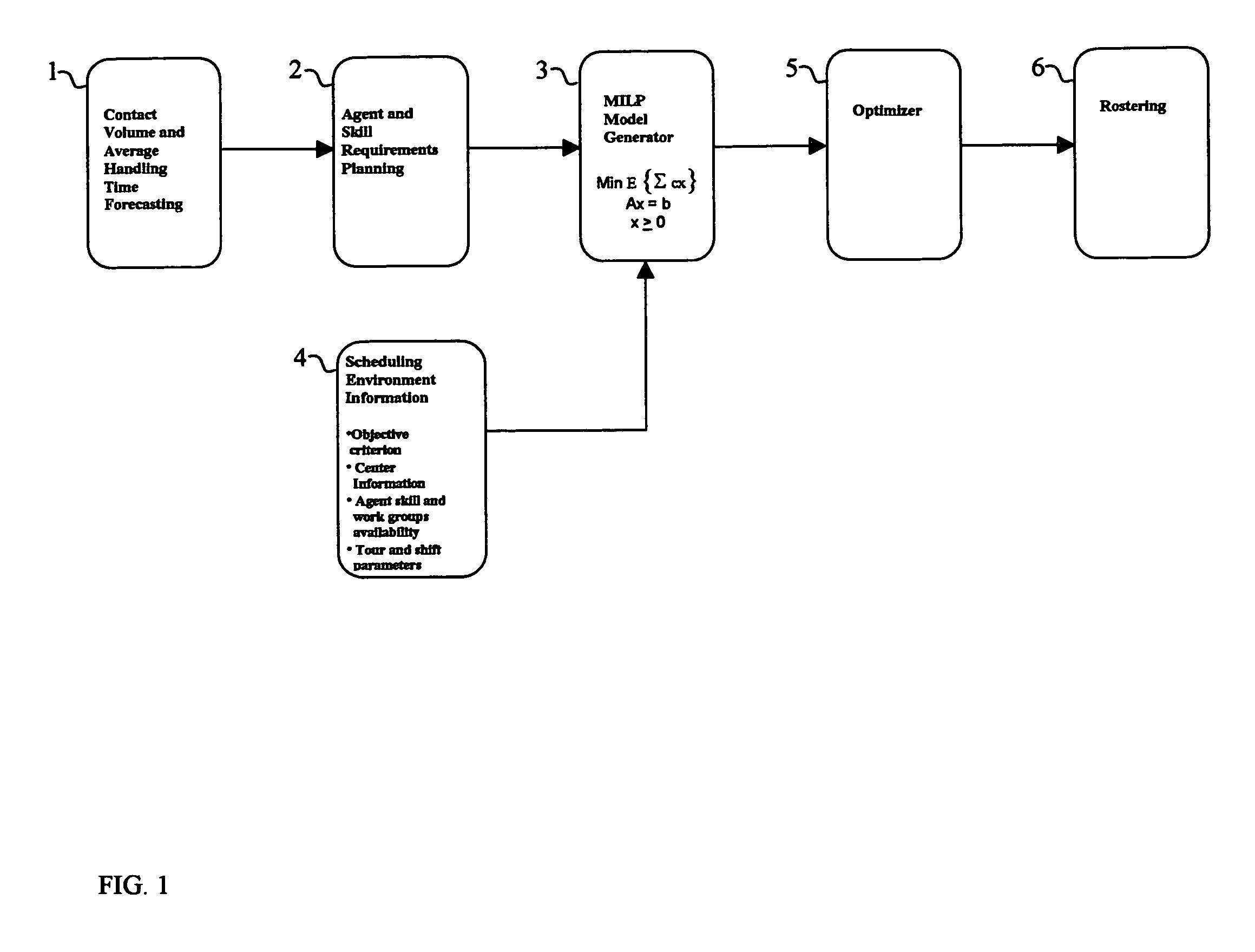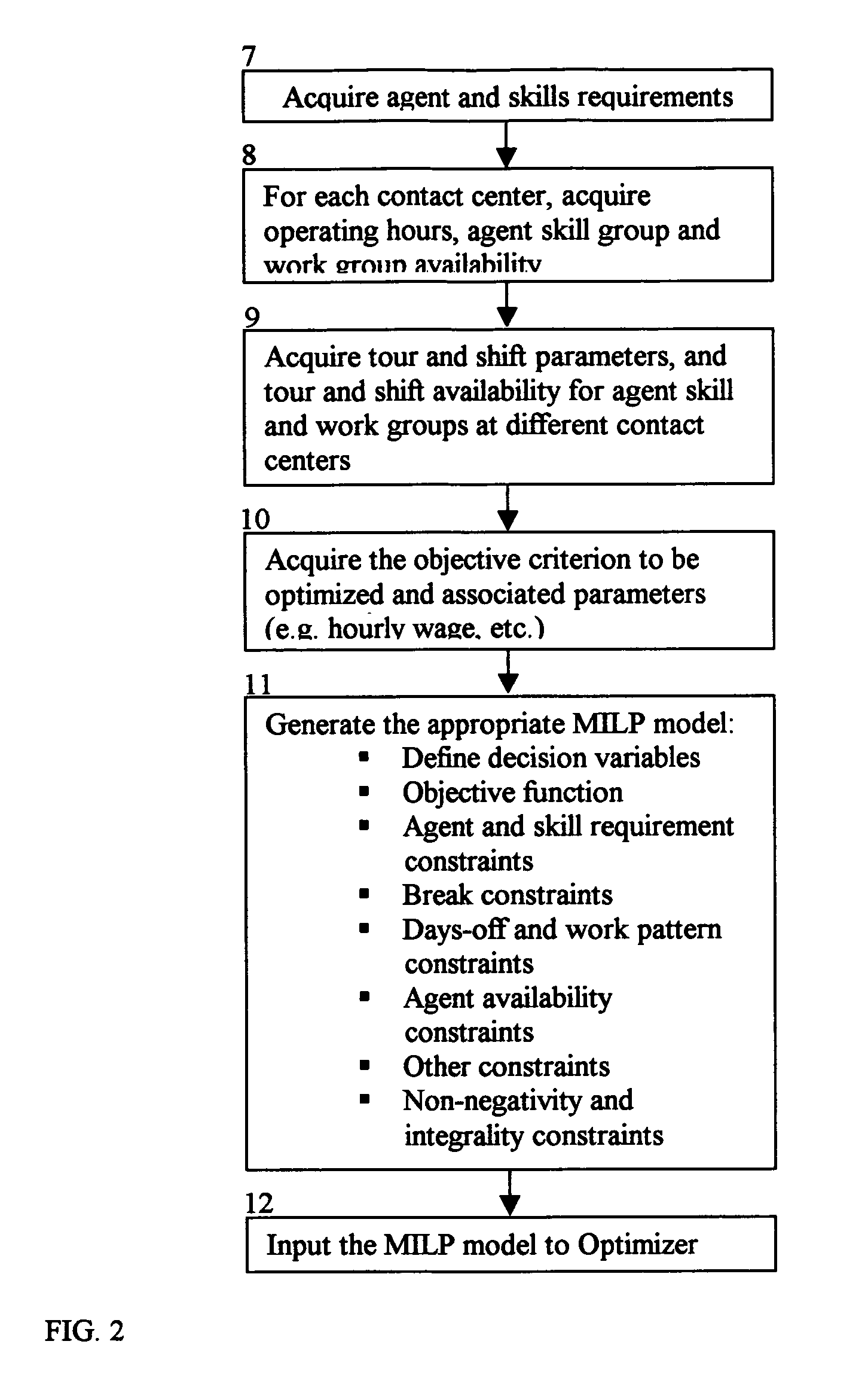Contact center scheduling using integer programming
a scheduling and contact center technology, applied in the field of computer systems and computer implemented methods, can solve the problems of laborious and inefficient multiple agent groups with different skills and full-time/part-time work requirements, poor service levels and longer waiting times for customers, and inability to meet the needs of customers, etc., and achieve the effect of favorable objective valu
- Summary
- Abstract
- Description
- Claims
- Application Information
AI Technical Summary
Benefits of technology
Problems solved by technology
Method used
Image
Examples
Embodiment Construction
[0031]FIG. 1 shows process architecture for optimal workforce scheduling with the method of present invention, and its computer application. It consists of several sub-processes including forecasting (1), agent and skills requirements planning (2), scheduling environment information input (3) (e.g. center information, agent skills and work group availability, tour and shift parameters), MILP model generator (4), optimizer (5), and rostering (6) processes. The main function of the forecast generator is to make predictions of future contact volumes, and average handling times (service times) for the contact types offered in each planning period during the days in the schedule interval (e.g. a week). This sub-process uses statistical techniques to analyze patterns in the historical data, and develop forecasts. Agent and skill requirements planning module (2) combines contact volume and average handling time forecasts with service level targets (e.g. 80% of incoming calls answered withi...
PUM
 Login to View More
Login to View More Abstract
Description
Claims
Application Information
 Login to View More
Login to View More - R&D
- Intellectual Property
- Life Sciences
- Materials
- Tech Scout
- Unparalleled Data Quality
- Higher Quality Content
- 60% Fewer Hallucinations
Browse by: Latest US Patents, China's latest patents, Technical Efficacy Thesaurus, Application Domain, Technology Topic, Popular Technical Reports.
© 2025 PatSnap. All rights reserved.Legal|Privacy policy|Modern Slavery Act Transparency Statement|Sitemap|About US| Contact US: help@patsnap.com



